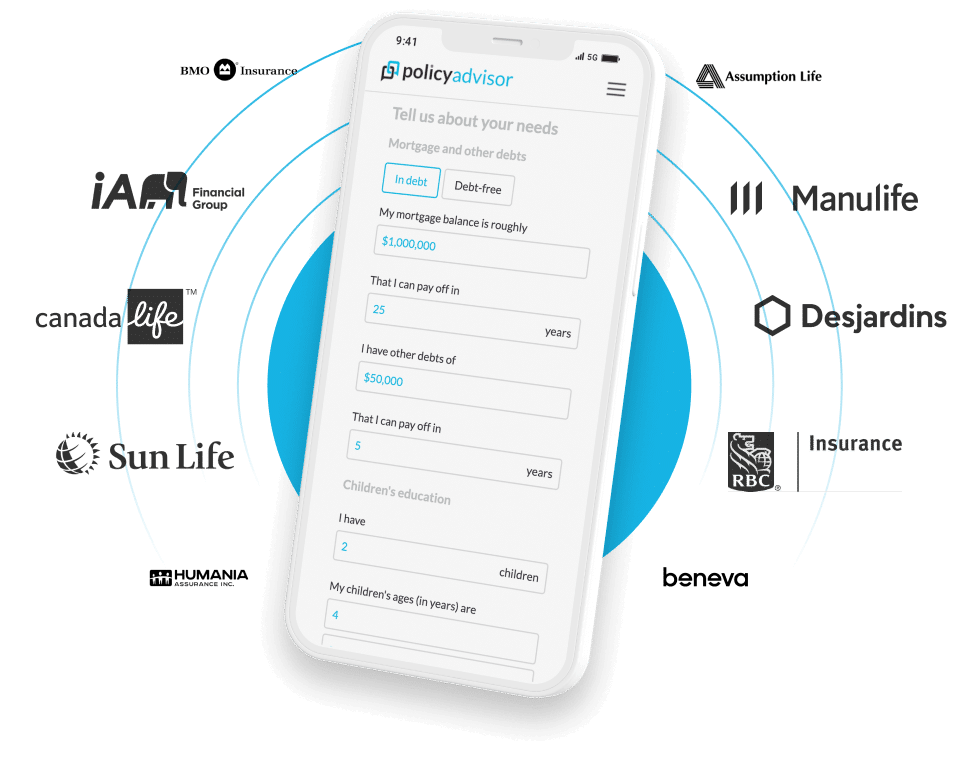
As you approach your late 30s or early 40s, retirement planning becomes increasingly important. But how much do you actually need to save to retire comfortably in Canada?
According to a recent survey by BMO, Canadians believe they need $1.7 million to retire comfortably, representing a 20% increase from 2020. However, 53% of Canadians in the survey didn’t know how much they will need to retire, and only 44% were confident they will have enough money to retire as planned.
How much savings do you need to retire comfortably in Canada?
It’s generally the rule of thumb that you will need 70 to 80% of your current salary to maintain a similar lifestyle in retirement. You should also consider economic conditions such as inflation, which has been 2% per year in recent years, as well as the 2% increase in goods and services. You may need to adjust your retirement savings plan to keep up with inflation and ensure that you have enough money to maintain your desired lifestyle throughout your retirement years.
To have your retirement nest egg secured, experts recommend that you have saved…
- 1x your annual income by the time you are 30 years old
- 3x by 40 years old
- 6x by 50 years old
- 8x by 60 years old
- 10x by 67 years old
How much money does the average Canadian retire with?
The average amount held in a Registered Retirement Savings Plan (RRSP) was $144,613 in 2022, according to BMO.
| Region | Average RRSP Account Total | Average RRSP Contribution/year |
|---|---|---|
| Atlantic | $127,814 | $8,115 |
| Quebec | $125,751 | $6,155 |
| Ontario | $162,913 | $7,435 |
| Prairies | $138,391 | $7,429 |
| Alberta | $157,405 | $7,054 |
| BC | $125,573 | $7,298 |
| National | $144,613 | $7,058 |
What is the average age of retirement in Canada?
The average age of retirement in Canada has been increasing in recent years. According to Statistics Canada, in 2022, the average age of retirement was 66 for men and 64 for women. This is a significant increase from the early 2000s, when the average age of retirement was around 61 years for both men and women.
| Average Age of Retirement (2022) | |
|---|---|
| Public sector employees | 63 |
| Private sector employees | 65 |
| Self-employed | 68 |
| Total Average | 66 |
The increase in retirement age is partially due to changes in government pension policies and the increasing cost of living, which has made it more difficult for Canadians to retire comfortably. Additionally, many Canadians are choosing to work longer for personal reasons, such as enjoying their job, staying active and engaged, and maintaining social connections.
How much do retirees in Canada spend?
In 2019, Stats Canada reported that Canadian couples over 65 spent on average $48,453 per household. This amount Canadian retirees spend can vary significantly depending on factors such as location, housing, health, inflation, and other personal circumstances.
When you’re calculating how much you’ll spend during a comfortable retirement, you might start by looking at how much you spend currently. Having an honest look at your financial situation and spending habits now will give you a better picture of your retirement savings goals.
Then, look at the expenses in retirement that you won’t have if you’re not working anymore. For example, less gas for commuting, monthly payments related to your children, loan payments that might get squared away before retirement, etc.
Finally, factor in any extra expenses an active retirement may bring—like going on that trip you always dreamed of.
How long will my retirement savings last?
The average life expectancy in Canada is about 82 years old—so you may want to budget so you have enough money until then. But the exact answer depends on several factors, including how much you’ve saved, your lifestyle and expenses, and your investment returns. While it’s impossible to predict future economic conditions, there are some steps you can take to make sure your money for retirement lasts as long as you.
Determine your expected retirement expenses
This includes your essential expenses, such as housing, food, and healthcare, as well as any discretionary expenses, such as travel or hobbies
Calculate your expected retirement income
This includes government benefits, pensions, and investment portfolio income.
Once you have a good sense of your expected expenses and income, you can use a retirement calculator to estimate how long your savings may last. Many online retirement calculators are available for free and take into account various factors such as inflation, investment returns, and life expectancy. Keep in mind that these calculators are just estimates, and your actual results may differ based on various factors.
It’s also important to regularly review your retirement plan and adjust as necessary. If you find that your savings may not last as long as you need, you may want to consider working longer, adjusting your retirement lifestyle, or seeking professional financial advice.
Overall, it’s crucial to plan ahead and understand how long your retirement savings may last. By taking proactive steps and regularly reviewing your plan, you can help ensure a more comfortable and financially secure retirement.
How to save for retirement
Aside from throwing cash under your mattress, you can make sure your golden years are actually golden in a number of ways.
1. Tax-free savings accounts (TFSA)
A Tax-free savings account (TFSA) is a savings vehicle that allows Canadians to save and invest money without paying taxes on the interest, dividends, or capital gains earned within the account. The rate of return for TFSAs varies from 0.5-5%.
The contribution room is not tax-deductible, meaning contributions to a TFSA are made with after-tax dollars. However, withdrawals from this personal savings account are tax-free, which can be a significant advantage for retirees looking to supplement their retirement income.
TFSA contribution room accumulates every year, with the annual limit set by the federal government. As of 2024, the annual TFSA contribution limit is $6,000. Unused contribution room carries forward to future years, allowing Canadians to make larger contributions in the future. But be aware that exceeding the annual contribution limit will result in a tax penalty.
TFSAs can hold a wide range of investments, including cash, GICs, stocks, bonds, and mutual funds, making them a versatile savings tool for retirement planning. With proper planning and investment strategies, a TFSA can be an effective way to save for retirement while minimizing taxes.
How to open a TFSA
The Government of Canada website has more information on TSFAs and how to open them, but here are the basics.
- Contact your financial institution, credit union, or insurance company (note that not every insurance company has this option).
- Provide the institution with your SIN and date of birth so that they can register your TFSA. Your issuer may ask for additional supporting documents.
2. Registered Retirement Savings Plan (RRSP)
A Registered Retirement Savings Plan (RRSP) is a type of account that Canadians can use to save for retirement. Contributions made to an RRSP are tax-deductible, meaning that they reduce the amount of income tax owed for that year. The funds in an RRSP grow tax-free, meaning that any interest, dividends or capital gains earned on investments held within the account are not taxed until they are withdrawn. The average rate of return for RRSPs is around 3-4%.
The government sets contribution limits for RRSPs, which are based on a percentage of the individual’s income up to a certain maximum amount. The contribution limit for the 2022 tax year is 18% of an individual’s earned income in the previous year, up to a maximum of $29,210. However, unused contribution room from previous years can be carried forward, and contribution limits can be affected by factors such as pension adjustments or previous withdrawals.
RRSPs are often used as a long-term savings vehicle for retirement, as funds withdrawn from the account are subject to income tax at the time of withdrawal. However, there are also certain circumstances in which withdrawals can be made without incurring taxes, such as the Home Buyers’ Plan or the Lifelong Learning Plan.
Spousal or Common-Law RRSP
Depending on your marital status, you may consider setting up a spousal or common-law partner RRSP to help distribute retirement income more equally between partners. This type of plan is particularly advantageous when a higher-income partner contributes to an RRSP for their lower-income partner. The primary contributor can benefit from a tax deduction for their contributions, while the other spouse, who is expected to be in a lower tax bracket during retirement, can receive the income and report it on their income tax and benefits return.
Self-directed RRSP
If you would like to have more control over building and managing your investment portfolio, you may consider a self-directed RRSP. With this type of RRSP, you can buy and sell various types of investments based on your preferences. Before going ahead with this type of RRSP, it’s important to consult with your financial institution.
3. Canada Pension Plan (CPP)
The Canadian Pension Plan (CPP) is a social insurance program administered by the federal government of Canada. This public pension is designed to provide a basic level of retirement income to all eligible Canadians. It is funded by contributions from employees, employers, and self-employed individuals, as well as investment income earned on the assets of the CPP.
The amount of CPP benefits that an individual is eligible to receive depends on several factors, including their contributions to the plan, their average earnings over their working years, and the age at which they choose to start receiving benefits. CPP benefits can include retirement, disability, and survivor benefits.
The CPP is a mandatory program for most Canadian workers, although some individuals may be exempted from contributing to the plan. The CPP is one of the cornerstones of Canada’s retirement income system, along with Old Age Security (OAS) and private pensions.
4. Workplace pension
A workplace or employer pension is a retirement plan provided by your work that helps you save for your retirement. These plans are typically offered as part of an employee benefits package, and the employer may contribute to the plan on behalf of the employee.
Employee pension plans can take many different forms, but they generally fall into two broad categories: defined benefit plans and defined contribution plans. Defined benefit plans promise a specific payout to the employee upon retirement, based on a formula that takes into account the employee’s salary and years of service. Defined contribution plans, on the other hand, do not guarantee a specific payout, but instead allow the employee to contribute a percentage of their salary to the plan, and the employer may match some or all of that contribution.
Workplace pensions can be a valuable way to save for retirement, as they typically offer tax benefits and employer contributions can help boost the employee’s savings. However, employees should also understand the terms of their plan, including any vesting periods or limitations on withdrawals, in order to make the most of their retirement savings.
Inflation-linked employer pensions
There are several types of inflation-linked pension plans in Canada, including defined benefit (DB) plans, defined contribution plans, and hybrid plans. The goal of these plans is to help retirees maintain the purchasing power of their pension income as the inflation rate rises.
Inflation-linked DB pension plan: The employer guarantees a certain level of retirement income based on a formula that takes into account the employee’s years of service and salary. Inflation adjustments may be built into the formula or may be added as an additional benefit.
Inflation-linked defined contribution pension plan: The employee contributes a percentage of their salary to the plan, and the employer may match some or all of the contribution. The employee’s retirement income depends on the performance of the investments in the plan, and the plan may offer inflation-adjusted investment options.
Hybrid pension plan: Combines features of both defined benefit and defined contribution plans, offering a certain level of retirement income while also allowing for investment flexibility.
Inflation-linked pension plans are regulated by the federal government and are subject to minimum funding requirements and other regulations to ensure that they are adequately funded to meet their pension obligations.
5. Life Insurance
While you should be saving on the side, you may leverage your life insurance policy for retirement.
- Permanent Life Insurance: Permanent life insurance policies, such as whole life insurance, provide both a death benefit and a cash value component that grows over time. This cash value can be accessed during retirement to supplement your income or to provide a source of emergency funds. Keep in mind that accessing the cash value may reduce the death benefit paid out to your beneficiaries.
- Annuities: An annuity is a type of life insurance product that can provide a guaranteed income stream during retirement. You pay a lump sum or periodic payments to an insurance company, and in return, they promise to pay you a regular income for a set period or for the rest of your life.
- Life Insurance as an Estate Planning Tool: Life insurance can be used to transfer wealth to your beneficiaries, which can help to reduce your overall estate taxes. This can be especially helpful for business owners, farmers, or others with a significant amount of assets.
Read more about the best life insurance for seniors.
Frequently Asked Questions
Is a million dollars enough to retire in Canada?
No, a million dollars might not be enough to retire in Canada. Recent data from BMO states that Canadians believe they need around $1.7 million to retire. Whether a million dollars would be enough for you to retire comfortably depends on factors such as your lifestyle, expenses, and retirement goals. While a million dollars may seem like a large sum of money, it may not be enough for everyone to retire on.
Is it better to retire at 60 or 65 in Canada?
You can receive your CPP payments as early as 60, but the earlier you start, the lower your payments will be. The standard age to start collecting CPP is 65. When you can retire depends on how much you have saved, and how much you budget your spending to be each year.
What is the average Canadian retirement income?
The average retirement income for seniors (65+) in Canada is $32,000 per year (Statista). Some retirees may have additional sources of income beyond their retirement plan, such as investments, part-time work, or government benefits like the Canada Pension Plan (CPP). Ultimately, the amount of retirement income someone receives depends on a complex interplay of individual circumstances, financial planning, and government policies.
Your retirement strategy
Overall, it’s crucial to plan ahead and understand how long your retirement savings may last. By taking proactive steps and regularly reviewing your plan, you can help ensure a more comfortable and financially secure retirement. The best thing you can do is to speak to a retirement expert from a financial institution.
While PolicyAdvisor cannot help you set up RRSPs or TSFAs, we can certainly help you integrate life insurance into your retirement savings strategy. Connect with one of our life insurance advisors to chat about your long-term financial plan.
According to recent polls, many Canadians believe they will need $1.7 million to retire comfortably. However, everyone’s retirement savings goals will differ depending on their spending, savings, debt, and lifestyle choices. Still, only 44% are confident they will have enough money to retire as planned. As a general rule, experts recommend having saved 1x your annual income by age 30 and increasing that amount as you age, with a goal of having saved 10x your annual income by age 67 to have a secure retirement nest egg.




